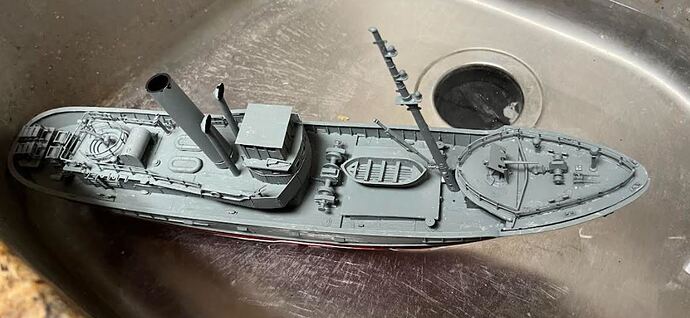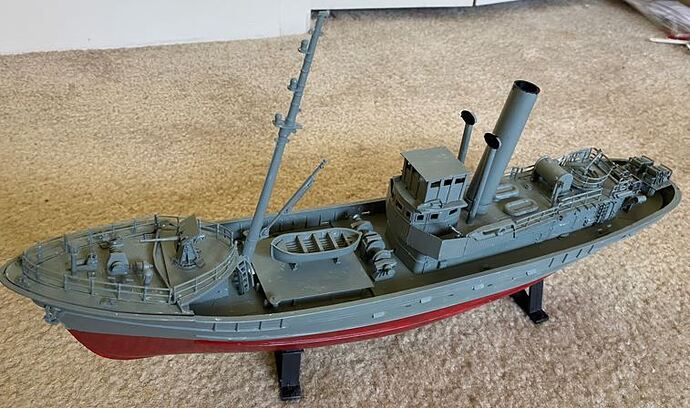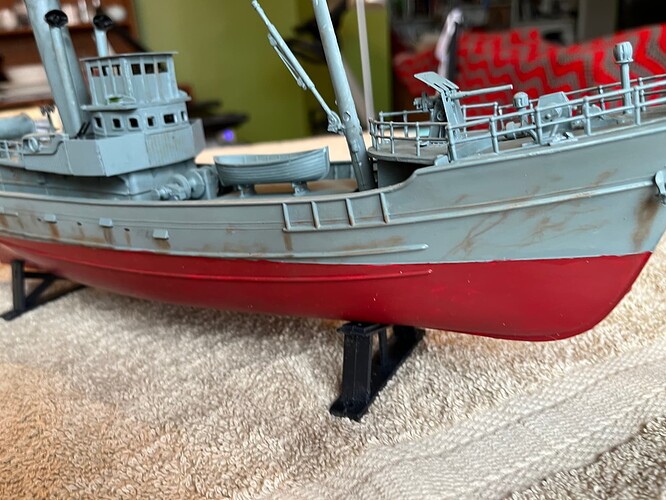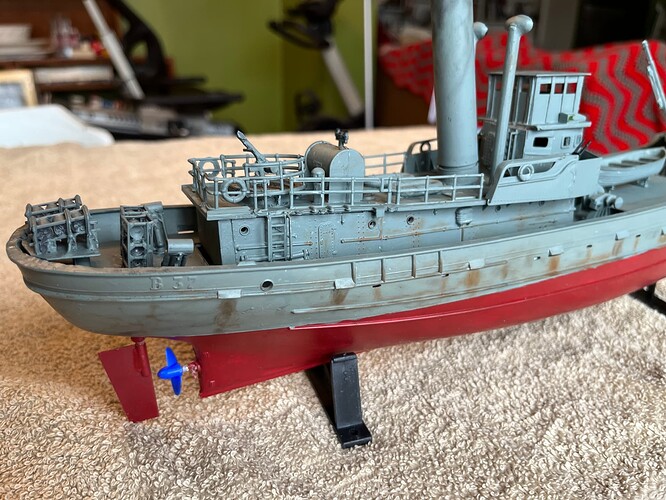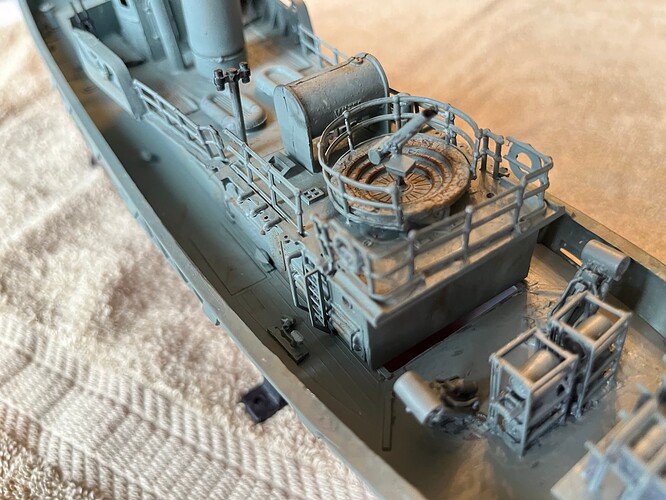Sorry, you’re gonna make this thing float and stuff too? Amazing!
Been following your excellent work, but I have to ask - why did you wait until after the hull was painted etc before starting to work out the fit of the RC components?
That is the norm and was what I expected to do. Waiting for components, fussing out how to fabricate stuffing tube etc took time so I followed the path of least resistance and started assembly instead. 
Everything set for sea trials except the rudder link. I need to find a suitably stiff wire and probably buy new needlenose pliers.
Outstanding build Danie, and rc too, amazing, 
 .
.
G, 
Sea trials in the kitchen sink. She rides high, a bit tender with a slight list but ballasting and adjusting and securing the battery location should fix that.
The engines are quirky but work, albeit the servo wants to move the prop backwards, so it will live its life steaming forward full speed astern.
No sign of any leaks.
The crew are dismissed for Christmas Leave.
Nice to see she’s watertight Danie, 
 . Talking of crew, will she have a few deckhands stationed aboard once she goes to sea?
. Talking of crew, will she have a few deckhands stationed aboard once she goes to sea?
G, 
I might press the hands from the diesel tug eventually.
She looks well seaworthy Danie!
Would these tubs have carried any markings like pennant numbers?
Answered my own question and apparently as a trawler it would have been identified as FYxx.
So the question is not did she but will she?
They had different types of pennant numbers many “FY” some “T” and assorted others. Sometimes they were painted onto the hull sometimes not (or were obliterated by time or hasty camouflage painting). I feel comfy leaving it anonymous, Harry Tate’s Navy tended toward informality.
I’m probably a bit late in commenting, but it strikes me the funnel is a bit plain compared with the rest of the build. They often had some clutter attached such as exhaust/vent steam pipes, whistles, etc…
Cheers,
M
Trawler funnels were not nearly as busy as those on “real” warships. The one feature most have in photos are funnel-stays, but this is meant as an eyeball scale rc model and I’m avoiding things that break easily or preclude removing the deck for access and popping off the mast for transport. I had a wonderful model of the 1876 HMS Dreadnought get destroyed by a mover and want to avoid that this time. It detracts a bit but saves repairs.
All very valid points, but a couple of lengths of sprue/tube and a couple of bands to indicate the funnel cap might help with a somewhat unfinished-looking but prominent feature of an otherwise very impressive
model.

P.S. I thought it might possible the “Pennant Numbers” were just their civil registration codes, the initial letter being their home port (“FY” is Fowey, “H” is Hull, “GY” is Grimsby, etc.) but I think there are too many discrepancies for this to be the case. There were also many “refugee” fishing vessels from occupied countries operating out of U.K. ports during the war.
Regards,
M
Most requisitioned trawlers were “FY”, admiralty trawlers “T” but special service trawlers and random odd cases had other letters.
A last point on the funnel is that I may need to shorten it or find a lighter one if it is still tender after ballasting and I won’t know that until I try it at speed in open water. No point in adding to it yet.
Good suggestion though, and that’s an excellent looking model!
While working out the mechanics I bought a Lindberg Diesel Tug to try to remember how that seemed so easy twenty odd years ago. Now I’m starting to dream about converting that kit into a WW2 Assurance Class ocean rescue tug. Why bother making it as just another Lindberg tug? {evil gleam in eyes}


